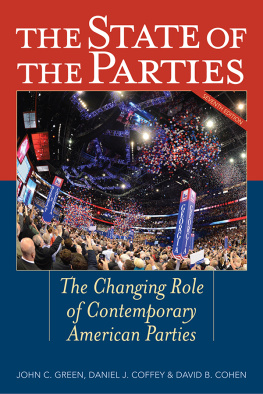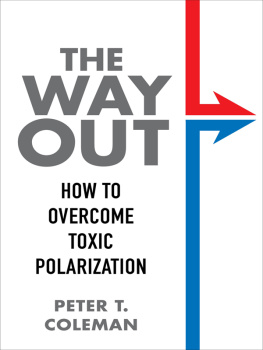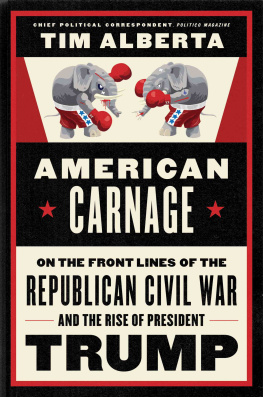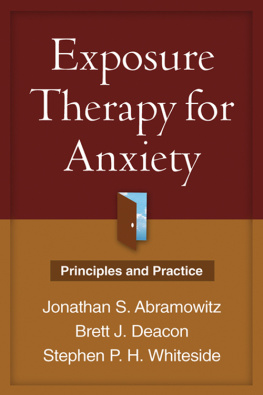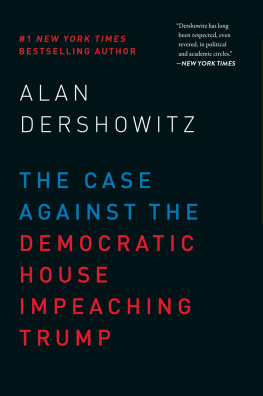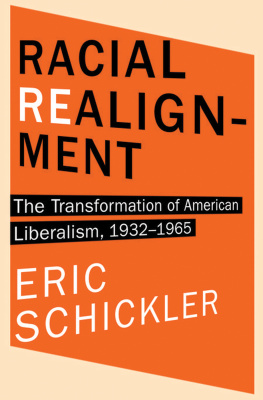The Great Alignment
The Great Alignment
Race, Party Transformation, and the Rise of Donald Trump
Alan I. Abramowitz

Published with assistance from the foundation established in memory of Philip Hamilton McMillan of the Class of 1894, Yale College.
Copyright 2018 by Alan I. Abramowitz.
All rights reserved.
This book may not be reproduced, in whole or in part, including illustrations, in any form (beyond that copying permitted by Sections 107 and 108 of the U.S. Copyright Law and except by reviewers for the public press), without written permission from the publishers.
Yale University Press books may be purchased in quantity for educational, business, or promotional use. For information, please e-mail (U.K. office).
Set in Janson Roman type by Integrated Publishing Solutions, Grand Rapids, Michigan.
Printed in the United States of America.
ISBN 978-0-300-20713-2 (hardcover : alk. paper)
Library of Congress Control Number: 2017961074
A catalogue record for this book is available from the British Library.
This paper meets the requirements of ANSI/NISO Z39.48-1992
(Permanence of Paper).
10 9 8 7 6 5 4 3 2 1
To Ann
Preface
On January 20, 2017, Donald Trump was inaugurated as the forty-fifth president of the United States. The next day, millions of Americans turned out to protest Trumps presidency in rallies and marches across the nation. Hundreds of thousands showed up to march in Washington, D.C., but there were protest marches in almost every major city in the United States and in dozens of smaller cities and towns, from Huntington, West Virginia, to Oklahoma City, Oklahoma, to Fairbanks, Alaska.
In the first Gallup Poll measuring Trumps approval rating as president, three days after his inauguration, 45 percent of Americans approved of his performance and 45 percent disapproved. Trumps initial approval rating was the lowest in the history of the Gallup Poll; his initial disapproval rating was by far the highest in the polls history. Just as striking, though, was the sharp partisan divide in these ratings90 percent of Republicans approved of Trumps performance, while 81 percent of Democrats disapproved. In the United States Senate, Democrats and Republicans quickly found themselves battling over President Trumps choices for key Cabinet positions, with several, including his nominees for attorney general and secretary of state, winning approval on party-line or near party-line votes.
In an era marked by deep partisan divisions, Donald Trump may well be the most divisive political leader in modern American history. Nevertheless, while Trump won the election by exploiting the deep divisions in American society, he did not create those divisions. The deep racial, cultural, and ideological schisms exposed by Trumps candidacy have been developing for decades, and regardless of the course of his presidency, whether he succeeds beyond the wildest expectations of his supporters or fails miserably, they are not going away any time soon.
The central argument of this book is that the deep partisan divide that exists among the politically engaged segment of the American public as well as among political elites and activists is, fundamentally, a disagreement over the dramatic changes that have transformed American society and culture since the end of World War II, and that continue to have huge effects in the twenty-first century. The challenges posed by technological change, globalization, immigration, growing racial and ethnic diversity, and changes in family structure and gender roles have produced diverging responses from party elites and a growing alignment of partisan identities with deeper divisions in American society and culture. This great alignment has transformed the American party system and fundamentally altered American politics in the twenty-first century.
On one side of this partisan divide are those who have benefited from and welcome the new American society, including racial minorities, the LGBT community, religious moderates and skeptics, and more educated citizens who possess the skills to thrive in the economy of the twenty-first century. Those Americans voted overwhelmingly for Barack Obama in 2008 and 2012 and for Hillary Clinton in 2016. On the other side of the divide are those who find these changes deeply troubling and threatening, including religious conservatives and many less educated whites in small towns and rural areas. Those Americans voted overwhelmingly for John McCain in 2008, Mitt Romney in 2012, and Donald Trump in 2016.
With the nation almost evenly divided between supporters of the two sides, relatively small shifts in party allegiance or turnout can produce different outcomes and dramatic swings in the direction of public policy. Short-term forces still matter in elections, as the response of the public to the economic crisis posed by the Great Recession demonstrated in 2008. However, the great alignment has produced a sharply polarized electorate marked by deep hostility among partisans on both sides toward the other party and its leaders. The rise of negative partisanship has resulted in growing party loyalty, straight-ticket voting, and the increasing nationalization of sub-presidential elections. It also contributed to the improbable rise and ultimate victory of Donald Trumpa candidate who overcame strong opposition from many Republican Party leaders and elected officials and serious reservations among many Republican voters by exploiting fear and hatred of Democrats in general and Hillary Clinton in particular.
The great alignment has had profound consequences for almost every aspect of American politics. For one thing, it has resulted in a growing nationalization of party politics and electoral competition. The late House Speaker Tip ONeills famous statement that all politics is local has been stood on its head. Today, it would be more accurate to say that all politics is national. Dramatic increases in party loyalty and straight-ticket voting mean that the outcomes of elections at every level from the U.S. Senate and House down to local offices are closely tied to the results of presidential elections. As a result, the personalities and records of individual candidates mean far less than they did in the past.
The main beneficiary of this trend has been the Republican Party. Because of the heavy concentration of Democratic voting groups in large metropolitan areas, Republicans have long enjoyed an advantage in the number of congressional and state legislative districts that tilt toward the GOP in presidential electionsan advantage that had nothing to do with partisan gerrymandering. As recently as the 1990s, however, high rates of ticket splitting allowed Democrats to hold on to a large share of these districts. The increase in straight-ticket voting means that is no longer the case. In recent elections to the House of Representatives, over 90 percent of contests have been won by the candidate of the party carrying the district in the presidential election.
A similar trend is apparent in recent Senate elections. Each party now holds the large majority of seats in states won by its presidential candidate. But sparsely populated rural states are greatly overrepresented in the Senate, and most of those states now tilt toward the GOP. Moreover, this Republican advantage affects presidential elections, since each states two U.S. senators count in determining its electoral votes. In a nation that is becoming increasingly urbanized, and in which urbanization is highly correlated with partisanship, this GOP advantage is a source of growing frustration for Democratic leaders and voters.
Next page

